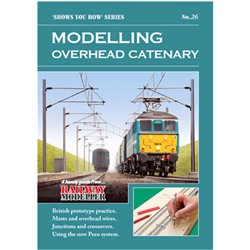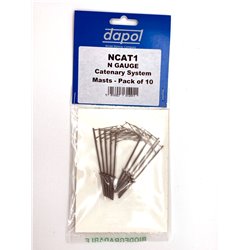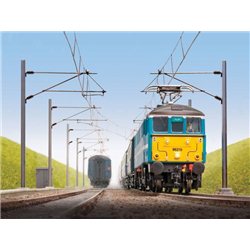Liquid Masks are latex-based liquid masking solutions, generally supplied in a small bottle. They are a viable and...
No products
Product successfully added to your shopping cart
There are 0 items in your cart. There is 1 item in your cart.
Search Tips
Christmas and New Year
We are dispatching orders every weekday apart from Christmas Day, Boxing Day and New Year's Day.
If you select next day delivery at checkout, please note deliveries are not made on public holidays or Sundays.
The shop in Sandown is open 23rd and 24th December, then closed from 25th December, reopening on 30th December.
Can I create working overhead electrification for my layout?
It is possible to create overhead electrification for a model railway layout. This typically involves installing overhead wires and pantographs on the trains to transfer power from the wires to the trains. Overhead electrification can add a realistic touch to a layout, as it is a common method of powering trains in the real world.
To create overhead electrification for a layout, a modeller will need to purchase and install overhead wire systems, pantographs, and controllers. These items are available from model railway suppliers and can be installed on existing trains or on new trains that are specifically designed for overhead electrification.
It is worth noting that creating overhead electrification can be a complex and time-consuming task, requiring some electrical engineering knowledge and additional tools and equipment. Additionally, it is important to ensure that the installation is safe and that the wiring and pantographs are properly maintained.
There are a number of publications available to assist modellers in creating overhead electrification. For example, an excellent place to start will be the 'Modelling Overhead Catenary' published by Peco as part of their 'Shows you how' series. Additional advice can be sought from various sources including internet tutorial videos, channels and forums or from Local Model Railway Groups.
Click here to receive the tips weekly in your mailbox. You can unsubscribe at any time.










